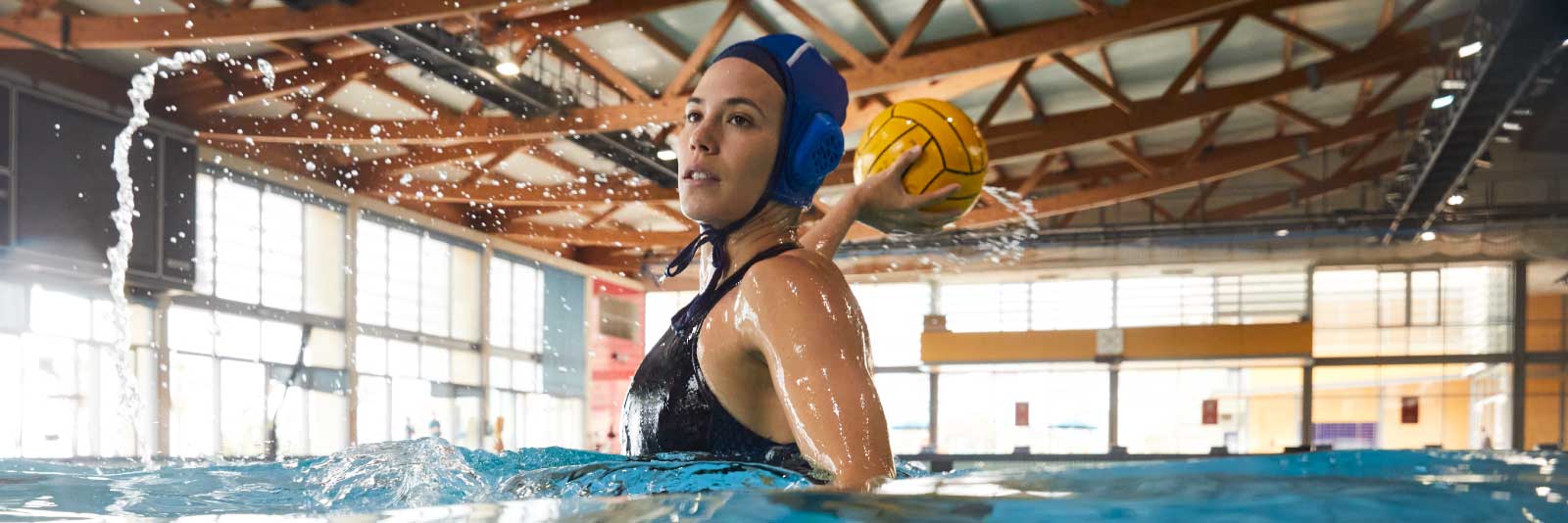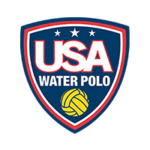Women’s Water Polo Scholarships

Fully funded NCAA Division 1 and 2 women’s water polo programs can award the equivalent of up to eight full-ride water polo scholarships per team. Unfortunately, most women’s water polo programs are not fully funded, which means student-athletes are competing for fewer than eight scholarship opportunities at each program. Ivy League institutions and Division 3 schools do not offer athletic scholarships. Instead, these institutions offer merit-based scholarships to student-athletes who meet certain academic standards.
College water polo coaches who do have scholarship money available to award are faced with the challenge of dividing their scholarship budget amongst current roster holders and recruits. Scholarship money is awarded to talented student-athletes who drive the team to the next level. College coaches typically award financial aid to current roster holders, not incoming freshmen. In this section, we outline the scholarship opportunities at each division level, review the NCAA eligibility requirements and share the colleges with water polo scholarships.
Quick Links
How many scholarships are there for women’s water polo?
| Division Level | Number of Teams | Total Athletes in Division | Average Team Size | Scholarships Limit Per Team | Scholarship Limit Type |
| NCAA D1 | 33 | 711 | 21 | 8 | Equivalency |
| NCAA D2 | 12 | 244 | 19 | 8 | Equivalency |
| NCAA D3 | 17 | 268 | 16 | – | N/A |
| NAIA | 1 | 20 | 20 | – | N/A |
| CCCAA | 47 | 644 | 14 | – | N/A |
| Totals | 110 | 1,887 | 17 |
*Scholarship Limits Per Team: Each year, the NCAA gives college coaches a maximum number of scholarships that they can award to student-athletes. Only Division 1 and Division 2 programs that are fully funded have the budget to award the equivalent of eight full-ride scholarships. Due to a lack of funding, the majority of college coaches have less than eight scholarships to award current roster holders and recruits. This makes full-ride water polo scholarships extremely rare. Student-athletes attending Ivy League schools cannot receive an athletic scholarship, but they can receive an academic scholarship if they meet certain academic standards.
**Equivalency Scholarship: As an NCAA equivalency sport, water polo programs are given a scholarship budget based on the scholarship limit per team set by the NCAA. To award athletic scholarships, college coaches must divide up their scholarship budget amongst recruits and current roster players. With little funding available for college water polo programs, it is common for coaches to award partial funding to multiple athletes. For example, a water polo coach could divide the equivalent of eight scholarships in any portion among 15 water polo players.
How to get a water polo scholarship
Goalies and utility players are the most valuable and sought after positions in college water polo. These positions take priority when it comes to scholarship money because they demonstrate great versatility and directly impact scoring in the game. Regardless of the positions that a water polo athlete plays, here are a few tips that will better their chances of getting an athletic scholarship.
- Maintain good grades: Academic performance is just as important as athletic performance when college water polo coaches are recruiting student-athletes. Student-athletes should maintain high academic standing in high school to ensure that they meet the academic standards at their target schools and are NCAA eligible.
- Do your research: Student-athletes should research which NCAA Division 1 and 2, as well as NAIA, programs offer athletic scholarships.
- Identify alternatives: Due to the limited number of scholarships available, student-athletes should consider other forms of aid to cover the cost of college. This includes merit-based scholarships, grants, work-study and other alternatives.
How many scholarships for D1 women’s water polo?
- D1 women’s water polo scholarships per team: 8
- Total number of D1 women’s water polo teams: 33
- Average team size: 21
NCAA Division 1 water polo programs offer a maximum of eight athletic scholarships per team. The majority of NCAA Division 1 water polo programs are not fully funded and offer fewer scholarships than the eight maximum per team. International athletes are the most likely to receive a full ride to compensate for the cost of relocating.
NCAA Division 2 water polo scholarships
- D2 water polo scholarships per team: 8
- Total number of D2 water polo teams: 12
- Average team size: 19
Like Division 1 programs, NCAA Division 2 water polo programs are allotted the maximum of eight scholarships. These programs struggle with the same funding challenges as Division 1 programs, which means they generally have fewer than the maximum number of scholarships to offer recruits.
NCAA Division 3 water polo scholarships
- D3 water polo scholarships per team: 0
- Total number of D3 water polo teams: 17
- Average team size: 16
Merit-based scholarships are available to student-athletes who meet certain academic standards at the NCAA Division 3 level. Academic scholarship packages at a Division 3 schools have been known to provide student-athletes with better financial funding than athletic scholarships do at Division 1 and 2 institutions.
NAIA water polo scholarships
- NAIA water polo scholarships per team: 0
- Total number of NAIA water polo teams: 1
- Average team size: 20
The NAIA does not place a limit on the number of scholarships coaches can award per team. Based on communication with the NAIA, NCSA experts feel it is safe to assume that the NAIA offers similar scholarship opportunities compared to the NCAA. NAIA scholarship numbers vary from program to program, meaning coaches can decide how to divide their scholarship budget.
Water polo scholarship requirements
Student-athletes must meet the NCAA academic eligibility requirements to be eligible to compete on an NCAA sponsored team. The NCAA determines eligibility by evaluating the athlete’s academics and amateurism status. The following two factors are used to determine academic eligibility: core course requirements and core course GPA. Student-athletes must pass 16 core courses during high school. If a student-athlete does not pass all 16 courses, they are automatically not eligible to compete in the NCAA.
Best colleges with women’s water polo scholarships
NCSA developed Power Rankings to help student-athletes and their families identify colleges with water polo scholarships that meet their academic, athletic, social and financial needs. We rank the top college water polo programs based on a variety of factors that are important to consider in the college selection process, including academics, size, location and cost. Below is a list of the top 10 NCAA women’s college water polo programs based on NCSA’s Power Rankings.
- University of California – Los Angeles (UCLA)
- Stanford University
- University of California
- Princeton University
- Harvard University
- Brown University
- University of California – San Diego
- University of Southern California
- University of Michigan
- University of California – Irvine
See the full list of top-ranked women’s college water polo programs.
What you should know about water polo scholarship offers and negotiations
Most athletes will receive a small partial athletic scholarship if they receive any financial funding through the program at all. But student-athletes can still earn a spot on the team, even if they don’t receive a scholarship. Below we briefly describe each of the five different types of offers.
- Full-ride scholarship offer: As an equivalency sport, water polo programs are given a scholarship budget to divide up amongst the team. With an equivalent of eight full-ride scholarships, college coaches typically award partial scholarships to multiple roster holders and recruits, rather than full-ride scholarships.
- Partial scholarship offer: To make the most of their scholarship budget, college coaches will award partial scholarships that student-athletes can use to cover the cost of tuition, books, room and board and other fees. Student-athletes can combine their academic scholarship, grant and other forms of financial aid with a partial athletic scholarship to cover the cost of college.
- Recruited walk-on (preferred): Because funding for programs is limited, college coaches cannot award an athletic scholarship to every recruit. Instead, college coaches can offer a roster spot to a recruit as a preferred walk-on. This guarantees the recruit a spot on the roster but does not include any financial aid.
- Unrecruited walk-on: The last option that a student-athlete has to make the team is as an unrecruited walk-on. Water polo programs that host walk-on tryouts allow athletes to try out for the team. If the athlete impresses the coach, they can earn a roster spot as a walk-on.
The best opportunity to negotiate a scholarship opportunity and get more money is to present other serious offers that the student-athlete has received from competitor programs as leverage. If student-athletes have a legitimate scholarship offer from a rival school, college coaches are more likely to award the athlete more funding.
















